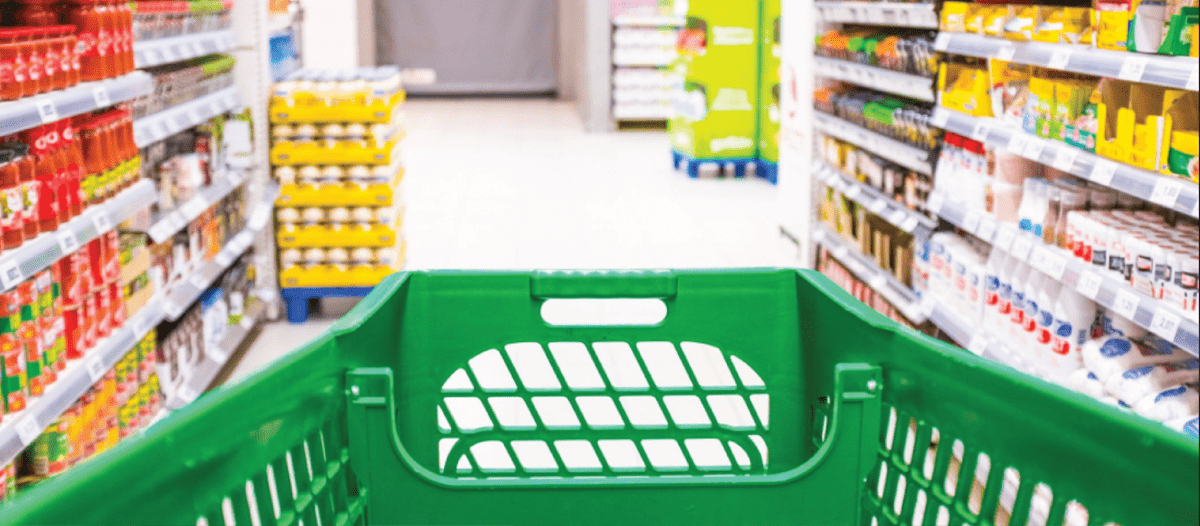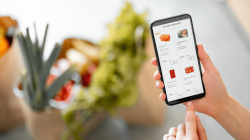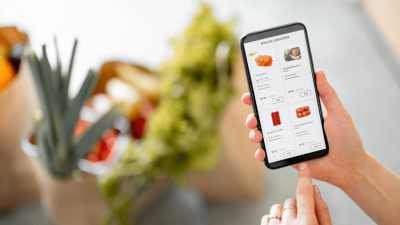How Packaging and Branding Influence Food and Beverage Purchases is a captivating exploration into the dynamic interplay between design and consumer decisions. Effective packaging not only catches the eye but also shapes perceptions of quality, enticing consumers to reach for a product. As brands strive to differentiate themselves in a competitive market, understanding the psychology behind packaging choices becomes vital.
From materials that evoke trust to colors that stimulate appetite, the elements of packaging and branding are meticulously crafted to influence consumer behavior and drive sales.
The Role of Packaging in Consumer Perception
The impact of packaging design on consumer choices is profound and multifaceted. Packaging serves not only as a container but also as a critical touchpoint that influences perceptions of quality, value, and overall brand experience. In a market saturated with options, effective packaging can be the deciding factor that sways consumer preference and drives sales.Packaging design significantly affects consumer perceptions of quality.
A well-crafted package can lead consumers to believe that the product inside is superior, even before they have had a chance to try it. This relationship is rooted in visual and tactile elements that convey brand messaging and emotional associations. For instance, luxury products often utilize sleek, high-quality materials that exude elegance, while eco-friendly products tend to use minimalist designs and biodegradable materials to appeal to environmentally conscious consumers.
Influence of Packaging Materials on Purchase Behavior
The choice of packaging materials plays a pivotal role in shaping consumer purchase decisions. Different materials can evoke different feelings and expectations about the product. Here are some key considerations:
- Plastic: Lightweight and versatile, plastic packaging is often associated with convenience. However, the increasing consumer awareness of environmental issues has led to a push for recyclable plastics.
- Glass: Glass packaging is often perceived as more premium and can enhance the perceived quality of the contents. It also offers better preservation of flavors, making it popular for beverages and gourmet foods.
- Metal: Typically used for products such as canned goods, metal packaging implies durability and longevity. The shiny finish can also attract the eye on crowded shelves.
- Paper and Cardboard: These materials are often used for sustainable packaging. Their tactile feel and printability allow brands to communicate their values while ensuring that the product feels approachable.
The key elements of effective packaging design include color, typography, imagery, and shape. Each element serves a specific purpose in attracting consumers:
- Color: Colors evoke emotions and can influence purchasing behavior. For example, red is often associated with excitement, while blue is perceived as trustworthy and calming.
- Typography: The choice of font communicates brand personality. Bold, modern fonts may appeal to younger audiences, while classic serif fonts can suggest tradition and reliability.
- Imagery: Visual elements such as illustrations or photographs can create a narrative or evoke a lifestyle that resonates with the target audience.
- Shape: Unique package shapes can stand out on shelves, making products memorable. Innovative designs can also enhance functionality, such as easy pouring or resealability.
Effective packaging is not just about aesthetics; it’s about creating an emotional connection that drives consumer loyalty.
Branding and Its Impact on Food and Beverage Choices: How Packaging And Branding Influence Food And Beverage Purchases
Branding plays a crucial role in shaping consumer choices in the food and beverage market. A strong brand not only differentiates products but also builds a connection with consumers, influencing their purchasing decisions. The characteristics of successful branding encompass clear messaging, emotional resonance, and consistent quality, establishing trust and loyalty among customers.Successful branding is characterized by several key features that collectively enhance a brand’s market presence.
These elements contribute significantly to consumer choices and brand loyalty. The importance of these attributes can be illustrated through the following points:
Characteristics of Successful Branding
A well-defined brand identity is essential for recognition and recall in a competitive market. The following characteristics are fundamental to successful branding in the food and beverage industry:
- Clear Brand Messaging: Effective branding communicates a clear message about the product’s value and purpose.
- Emotional Connection: Brands that resonate emotionally with consumers foster strong loyalty and preference.
- Consistency: Maintaining uniformity in branding across all platforms builds trust and recognition.
- Visual Appeal: Eye-catching packaging and logo design enhance brand attractiveness and shelf presence.
- Quality Assurance: Consistent product quality reinforces positive perceptions and repeat purchases.
Several brands have leveraged these characteristics to effectively increase sales and strengthen their position in the market. Notably, brands like Coca-Cola, Starbucks, and Ben & Jerry’s have masterfully utilized branding strategies to create a loyal customer base.
Examples of Effective Branding in the Industry
The following examples showcase how effective branding has translated into increased sales and consumer loyalty:
- Coca-Cola: With its recognizable logo and consistent messaging of happiness and togetherness, Coca-Cola has not only become a beverage staple but also an integral part of global culture.
- Starbucks: The brand’s ability to create a cozy, welcoming atmosphere, coupled with quality products, has cultivated a community around its coffee, enhancing customer loyalty.
- Ben & Jerry’s: Known for its quirky flavors and social activism, Ben & Jerry’s branding evokes a sense of fun and responsibility, appealing to consumers’ values while driving sales.
Brand loyalty tends to differ between well-established brands and new entrants in the market. Established brands typically benefit from consumer familiarity and trust, resulting in higher loyalty levels. Conversely, new entrants often face challenges in building their reputation and convincing consumers to choose their products over established favorites.
Brand Loyalty Comparison
Understanding brand loyalty is essential in assessing market dynamics. The following points highlight the differences in brand loyalty between established and new brands:
- Consumer Trust: Established brands often enjoy greater trust due to their longstanding presence, while new entrants must work hard to earn consumer confidence.
- Perceived Value: Consumers are likely to perceive established brands as providing consistent value, influencing their purchasing choices.
- Emotional Attachment: Long-term customers of established brands often develop emotional connections that new entrants struggle to replicate.
- Market Penetration: New brands may need to invest significantly in marketing to achieve the same level of recognition as established competitors.
In summary, the impact of branding on food and beverage choices is multifaceted, encompassing characteristics that drive consumer preferences, effective examples from notable brands, and the variance in brand loyalty between established brands and new market entrants.
Psychological Factors Influencing Packaging Decisions
Packaging goes beyond mere functionality; it serves as an essential marketing tool that significantly impacts consumer behavior. Understanding the psychological factors that influence packaging design allows brands to create more compelling products that resonate with target audiences. The interplay of visual elements, colors, and typography can evoke emotions, attract attention, and ultimately drive purchasing decisions.The design choices in packaging can trigger various psychological responses that guide consumers toward their choices.
By appealing to the senses and emotions, brands can create a connection that encourages trust and loyalty. Each element is strategically crafted to elicit specific feelings; for instance, the tactile experience of a package can evoke a sense of quality and care. This section delves into the nuanced factors that make packaging a critical aspect of the consumer purchasing journey.
Impact of Color Psychology in Food and Beverage Packaging
Color plays a formidable role in influencing consumer perceptions and decisions. It can convey messages, evoke emotions, and ultimately influence purchasing behavior. Research indicates that color can account for up to 85% of a consumer’s purchasing decision. Understanding color psychology is essential for brands looking to optimize their packaging.
- Red is often associated with excitement, passion, and appetite stimulation. Many fast-food chains utilize this color to incite quick decisions.
- Blue conveys trust and dependability, making it popular in health-oriented beverages and products.
- Green is synonymous with health and tranquility, frequently found in organic and environmentally friendly products.
- Yellow can evoke feelings of happiness and cheerfulness; it’s a common choice for snacks and treats targeting younger consumers.
- Black signifies luxury and sophistication, often utilized in high-end beverage packaging.
Brands that harness the power of color can create impactful packaging that resonates with their target audience, leading to increased sales and customer loyalty.
Typography and Imagery Influence on Consumer Choices
Typography and imagery are critical visual elements that can dramatically influence consumer perceptions and choices. The fonts used on packaging serve not just as a means of communication but also evoke specific emotions and associations.
- The font style can convey personality; for example, a serif font suggests tradition and reliability, while a sans-serif font appears modern and accessible.
- Imagery on packaging is equally vital. High-quality images can tantalize the senses, making the product more tempting. For instance, showing fresh fruits or vibrant ingredients can enhance the perception of quality and taste.
- Minimalist designs with clear, concise typography and appealing images can create an air of sophistication, attracting consumers seeking premium products.
Each element of typography and imagery should be harmoniously integrated into the packaging design to create a cohesive message that aligns with the brand’s identity and resonates with consumer preferences. The strategic use of these factors can significantly enhance product visibility and attractiveness on shelves.
Trends in Food and Beverage Packaging
The modern landscape of food and beverage packaging is rapidly evolving, reflecting both consumer preferences and the environmental consciousness of the market. As shoppers become increasingly aware of the impact of their choices on the planet, brands are responding with innovative solutions that resonate with these values. This shift not only affects the visual appeal of products but also their marketability and consumer trust.
Sustainable Packaging Trends
Sustainability is at the forefront of current packaging trends, influencing consumer purchasing decisions significantly. Eco-friendly materials, such as biodegradable plastics, recycled paper, and plant-based packaging, are becoming popular as consumers actively seek products that minimize environmental harm. Brands that adopt sustainable practices often experience increased loyalty and preference among environmentally conscious consumers.
“Consumers are willing to pay more for products that are sustainably packaged.”
Current trends in sustainable packaging include:
- Use of compostable materials that break down naturally, reducing landfill waste.
- Adoption of reusable containers encouraging a circular economy.
- Shift towards minimal packaging, reducing excess waste and materials.
Minimalistic Design in Branding and Packaging
The rise of minimalistic design in packaging emphasizes simplicity, clarity, and functionality. Brands are increasingly opting for clean lines, muted colors, and straightforward information, making their products stand out on crowded shelves. This design philosophy caters to consumers who prefer transparency and minimalism, reflecting a lifestyle choice that values authenticity and ease of understanding.
“Less is more – a principle that resonates with today’s discerning consumer.”
Key features of minimalistic packaging include:
- Limited color palettes that create a cohesive brand identity.
- Clear and bold typography to enhance readability and convey essential product information.
- Simple graphics that communicate the brand story without clutter.
Innovative Packaging Solutions, How Packaging and Branding Influence Food and Beverage Purchases
Leading brands are embracing innovative packaging solutions that not only attract attention but also enhance functionality. These creative approaches to packaging are essential in a competitive market where differentiation is crucial for success.
“Innovation in packaging can lead to improved user experience and increased brand loyalty.”
Examples of innovative packaging solutions include:
- Smart packaging with QR codes that offer interactive experiences and additional product information.
- Edible packaging that contributes to reducing waste while providing a unique consumer experience.
- Resealable pouches that maintain product freshness and convenience for on-the-go consumption.
Case Studies

The impact of packaging and branding on consumer purchasing decisions can’t be overstated. In today’s competitive food and beverage market, brands that successfully leverage innovative packaging strategies often find themselves at the forefront of consumer preference. This section presents notable case studies of brands that have transformed their market position through effective packaging redesigns and marketing campaigns.
Successful Market Transformations
Several brands have demonstrated that a thoughtful approach to packaging can significantly enhance market positioning. The following examples illustrate how these companies redefined their identity through strategic packaging initiatives:
- Coca-Cola: The iconic brand introduced its “Share a Coke” campaign, featuring personalized labels with popular names. This innovative packaging redesign not only resonated with consumers on a personal level but also led to a 2% increase in sales volume in the U.S. during its initial rollout. The campaign emphasized emotional connection, making it a landmark case in branding.
- PepsiCo’s Tropicana: In 2009, Tropicana faced a backlash after a packaging redesign that removed its iconic logo and orange image. Sales dropped by 20% shortly after the redesign, prompting the company to revert to its original packaging. This case highlights the importance of brand recognition and the risks associated with straying too far from established branding elements.
- Heinz Ketchup: Heinz undertook a packaging revamp that emphasized transparency and sustainability, utilizing a clear glass bottle to showcase its product’s quality. This change not only appealed to environmentally conscious consumers but also increased sales by 15% following the launch, proving that packaging can enhance perceived value.
Impactful Marketing Campaigns
Successful packaging strategies are often complemented by marketing campaigns that resonate with target audiences. Here are notable examples that illustrate the synergy between packaging and marketing:
- Absolut Vodka: With its distinct bottle shape and artistic label designs, Absolut launched a series of limited-edition bottles featuring original artwork. The marketing campaign around these unique designs attracted collectors and enthusiasts, leading to a 5% increase in market share during the campaign period.
- Oreo: In 2013, Oreo launched a campaign for its “Wonderfilled” series, utilizing playful, whimsical packaging that captured the brand’s fun spirit. Coupled with engaging digital marketing, the campaign resulted in a 10% increase in sales, showcasing the effectiveness of aligning packaging design with brand messaging.
- Blue Moon Brewing Company: The company redesigned its packaging to reflect its artisanal roots, using earthy tones and detailed descriptions on the label. This strategy resonated with craft beer enthusiasts, contributing to a 15% rise in sales, demonstrating that packaging can communicate brand values effectively.
Effective Packaging Strategies and Market Share Growth
Certain packaging strategies have proven to be particularly effective in driving market share growth. These strategies highlight the significance of design, functionality, and consumer engagement in influencing purchasing behavior:
- Color Psychology: Brands like M&M’s leverage vibrant color combinations in their packaging to evoke emotions and attract attention on shelves. This strategic use of color has helped the brand maintain a competitive edge, resulting in consistent sales growth.
- Convenience Packaging: Brands such as Chobani have adopted single-serve packaging that appeals to on-the-go consumers. This shift not only meets consumer demand for convenience but also has contributed to a notable increase in market share among yogurt brands.
- Eco-Friendly Initiatives: Brands like Unilever are increasingly using sustainable materials for packaging. The shift towards eco-friendly packaging has not only enhanced brand loyalty but has also captured the attention of environmentally conscious consumers, leading to an increase in market share.
“Effective packaging is not just about aesthetics; it’s about storytelling, connecting with consumers, and enhancing their experience.”
The Future of Packaging and Branding in Food and Beverage
As we gaze into the horizon of food and beverage packaging and branding, the landscape is poised to undergo transformative advancements. With the rapid pace of technological innovation and shifting consumer behaviors, the future promises a paradigm shift that strives to align brand identity with sustainability, personalization, and enhanced consumer experiences. Anticipated advancements in packaging technology are set to redefine how products are presented and perceived.
From smart packaging that communicates with consumers to biodegradable materials that minimize environmental impact, the next generation of packaging will seamlessly integrate functionality with aesthetic appeal.
Advancements in Packaging Technology
Emerging technologies are revolutionizing the packaging sector, providing brands with innovative ways to engage consumers and enhance product appeal. Consider the following advancements:
- Smart Packaging: Utilizing QR codes and NFC technology, smart packaging allows consumers to access information about product origin, nutritional content, and even recipes, creating an interactive experience that enhances brand loyalty.
- Eco-Friendly Materials: Brands are increasingly turning to biodegradable and compostable materials, reducing reliance on plastics. For instance, companies like Tetra Pak are innovating with plant-based packaging solutions that appeal to environmentally-conscious consumers.
- Active Packaging: This technology involves packaging that can interact with food to extend shelf life, maintaining freshness and reducing food waste. Examples include oxygen scavengers and moisture absorbers that keep products in optimal condition.
- Augmented Reality (AR): AR features in packaging can create immersive experiences, allowing consumers to visualize product benefits and engage with the brand on a deeper level, blurring the line between the physical and digital realms.
Evolving Branding Strategies
As consumer behavior continues to evolve, so will branding strategies. Today’s consumers are more informed, demanding transparency and authenticity from the brands they support. In response, companies are likely to adopt the following strategies:
- Personalization: Brands will leverage data analytics to create personalized packaging that resonates with individual consumer preferences, fostering a sense of connection and loyalty.
- Sustainability Messaging: Effective branding will heavily emphasize eco-friendliness, highlighting sustainable practices and materials to attract environmentally-conscious consumers.
- Storytelling: Brands will increasingly share their stories and values through packaging design, creating an emotional connection that goes beyond the product itself.
- Community Engagement: By involving consumers in co-creating packaging designs or branding campaigns, companies can foster a sense of ownership and loyalty among their target audiences.
Importance of Adaptability
In an ever-changing market landscape, adaptability in packaging and branding will be crucial for success. Companies must stay ahead of trends and consumer demands to remain relevant. Key aspects include:
- Market Research: Ongoing research into consumer preferences and market trends will enable brands to pivot swiftly, ensuring their packaging and branding efforts resonate with evolving needs.
- Flexible Design Processes: Brands that integrate agile design methodologies will be better equipped to test and implement changes based on consumer feedback, fostering innovation.
- Collaboration with Technology Partners: Partnering with tech firms to harness the latest advancements will allow brands to bring cutting-edge solutions to their packaging, enhancing consumer engagement and brand loyalty.
- Continual Learning: Adopting a culture of experimentation and learning from both successes and failures will empower brands to innovate consistently, ensuring they stay ahead of the curve.








